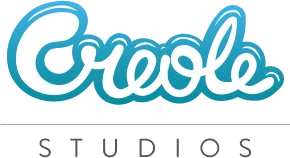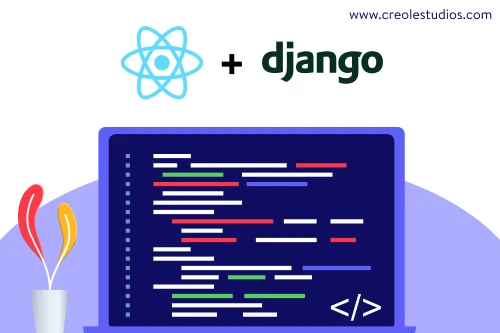Summary
ReactJS has emerged as one of the most popular JavaScript libraries for building user interfaces. Combined with Django, a robust and scalable web framework, ReactJS can provide a powerful solution for developing dynamic and responsive web applications. This article explores the fundamentals of ReactJS and Django, how they work together, and why developers should consider using them for their next project.
Introduction
Web development has evolved rapidly over the last decade, with developers constantly seeking tools and frameworks that can help create efficient, scalable, and interactive applications. Among the most popular front-end technologies is ReactJS, a JavaScript library that makes it easier to build dynamic and responsive user interfaces. On the backend, Django, a Python-based framework, offers scalability, flexibility, and security.
When combined, ReactJS and Django create a powerful full-stack development solution that allows developers to create modern web applications with a seamless user experience. In this article, we’ll explore what ReactJS and Django are, their benefits, and how they can be used together to create efficient, high-performing web applications.
What Is ReactJS?
ReactJS is an open-source JavaScript library developed by Facebook that allows developers to build user interfaces, specifically single-page applications (SPAs). React uses a component-based architecture, which makes it easier to manage and scale large applications by breaking the UI into smaller, reusable components.
React’s primary feature is its ability to efficiently update and render components when the underlying data changes, thanks to its virtual DOM (Document Object Model). This makes ReactJS an ideal choice for building interactive and real-time applications where performance is a key concern. If you’re considering building such an application, you may want to hire ReactJS developers who can harness the full potential of ReactJS to create seamless and efficient user experiences. Experienced developers can ensure your application is optimized for performance, scalability, and maintainability.
How to Use ReactJS as a Frontend Tool
ReactJS is primarily used for building the front end of a web application. It allows developers to design dynamic user interfaces by creating reusable components. Here’s how ReactJS works as a frontend tool:
- Component-based architecture: React allows you to break down the UI into smaller, manageable components, each responsible for rendering a part of the UI. These components can be reused, making it easier to maintain and update the application.
- Virtual DOM: React uses a virtual DOM to optimize performance. Instead of updating the entire UI whenever the data changes, React only updates the components that need to be changed, which significantly improves rendering speed.
- React Hooks: With the introduction of React Hooks, developers can manage state and side effects in functional components, making React even more powerful and easier to use.
- React Router: For handling navigation and routing in single-page applications, React Router is widely used to create dynamic routing and efficient navigation.
Benefits of ReactJS
ReactJS has become a go-to library for web developers due to its numerous benefits:
- React comes with multiple component libraries, add-on packages, and full template offerings, which save developers a lot of time, so they don’t have to build everything from scratch.
- React maintains excellent developer tools to debug and inspect state.
- React’s Redux extension provides easy and safe state management.
- It’s easy to create dynamic web applications with React, especially with clumsy HTML strings that often require complex coding. ReactJS uses JSX to solve this issue, a specific syntax that lets HTML quotes and HTML tag syntax applications render specific subcomponents.
- ReactJS enables developers to reuse components developed in other applications, sharing the same functionality. This provides significant time savings, allowing developers to complete projects at a much faster pace.
- ReactJS has a less steep learning curve as developers can quickly get familiar with its features to engineer web and mobile apps.
- React allows developers to build isomorphic apps, where similar code can be used for both the client and the server-side component of an app.
- ReactJS is known to be SEO Friendly, in contrast to previous JavaScript frameworks that were notoriously considered SEO unfriendly.
Quick Read: Reactjs V/s Angularjs
What is Django?
Django is an open-source, high-level Python web framework that enables rapid development of web applications. It follows the “batteries-included” philosophy, meaning it comes with many built-in features, such as an authentication system, admin interface, and database management, that help developers focus on building their applications rather than reinventing the wheel.
Django follows the Model-View-Template (MVT) architectural pattern, making it highly scalable and secure. It also emphasizes the use of reusable components and modular design, enabling developers to build clean and maintainable code.
How to Use Django as a Backend Tool
Django is a backend framework that provides a robust environment for building web applications. It is often used in conjunction with front-end tools like ReactJS to create dynamic web applications. Here’s how Django works as a backend tool:
- Data Modeling: Django uses models to define the structure of your database tables, allowing you to interact with the database using Python code rather than SQL queries.
- Routing and Views: Django uses URL patterns to map HTTP requests to specific views (functions or classes that handle the request and return a response). This makes it easy to create RESTful APIs and integrate them with front-end technologies like React.
- Authentication and Security: Django provides built-in authentication, authorization, and security features, such as password hashing, session management, and protection against CSRF (Cross-Site Request Forgery) attacks.
- Admin Interface: One of Django’s standout features is its automatic admin interface, which allows developers to quickly manage and update the content of their application.
Benefits of Django
Django offers several advantages for backend development:
- Django provides various unique libraries, add-ons, and packages with a lot of pre-built code. Principally, Django delivers everything required to build the backend of a web application and competently handles most web development tasks like site maps, RSS feeds, content administration, user authentication, etc.
- Django also works with most major databases and enables the use of a more suitable database in a specific project or even multiple databases simultaneously.
- Django has a manageable learning curve, excellent documentation, and is relatively easy to set up and configure.
- Django comes with excellent security that can help protect your website or app from most attacks like SQL Injection, XSS, CSRF, Clickjacking, etc.
- Django REST Framework makes setting up an API on top of Django relatively easy.
- Django admin provides easy off-the-shelf views for things developers do not necessarily want to custom-build in React.
- Django also boasts an active community with thousands of tutorials and helpful resources.
- Django is highly scalable and battle-tested to tackle projects of any size and capacity, from a simple website to a high-load web application.
- Django is cross-platform compatible, which means that a project can be based on Mac, Linux, or PC.
Benefits of ReactJS with Django
As explained, Django is a backend web framework while ReactJS is arguably a frontend framework (tending towards a library) for developing single-page applications (SPAs). That being said, overall, ReactJS has similar benefits to Django in terms of scalability, being battle-tested, having exhaustive documentation, an active community, and an excellent set of built-in tools that allow users to focus on the construction of software logic instead of other trivial aspects.
With regards to merging Django and React technologies, it’s essentially a canonical combination for building web software. In practice, an application that combines both technologies will have Django as the backend and ReactJS as the front end. Simply put, this means that the REST API calls the backend if any data is needed in the front end. Since frontend frameworks require a RESTful API to interact with, developers can choose to create a RESTful backend API with Django.
How to Use ReactJS and Django Together?
To use ReactJS and Django together, you’ll typically set up Django to serve as the backend API provider (using Django Rest Framework for example) and ReactJS to handle the front end. Here’s a simple approach:
1. Set up Django backend: Create a Django project and install Django Rest Framework to build APIs that will handle data and communicate with the front end.
2. Create React frontend: Set up a React project using tools like Create React App and build your frontend components to interact with the Django backend.
3. Enable communication between React and Django: Use HTTP requests (such as Axios or the Fetch API) to send data from the React front to the Django backend and vice versa.
4. Handle authentication: Use Django’s built-in authentication system to manage user login, registration, and permissions. You can integrate this with React by using tools like JWT (JSON Web Tokens) for secure authentication.
5. Deploy the application: You can deploy the Django backend and React frontend separately or together, depending on your project requirements. Services like Heroku or AWS can host both parts.
Conclusion
ReactJS and Django are both powerful tools in their own right. When combined, they provide a scalable, efficient, and flexible solution for building modern web applications. ReactJS enables developers to create interactive and dynamic UIs, while Django offers a robust and secure backend environment. Together, they form a winning combination for building full-stack applications that deliver outstanding performance and a seamless user experience.
FAQs
1. What is the difference between ReactJS and Django?
Ans: ReactJS is a frontend JavaScript library used for building dynamic user interfaces, while Django is a backend Python framework used for building web applications and APIs.
2. Why Choose ReactJS for Your Next Project?
Ans: Choosing ReactJS for your project offers fast rendering, reusable components, and a strong ecosystem, making it ideal for building dynamic, scalable web applications with improved productivity and maintainability.
3. Can I use ReactJS with any backend technology?
Ans: Yes, ReactJS is frontend-agnostic and can work with any backend technology that provides APIs, including Django, Node.js, Ruby on Rails, and more.
4. Is it necessary to use Django Rest Framework with ReactJS?
Ans: While not necessary, using Django Rest Framework (DRF) simplifies the process of building RESTful APIs and helps facilitate communication between the React frontend and Django backend.
5. How does ReactJS handle data updates?
Ans: ReactJS uses a virtual DOM to efficiently update and render only the components that need to be changed, improving performance and reducing unnecessary re-rendering.
6. Can Django handle real-time data?
Ans: While Django itself does not provide real-time features out of the box, you can integrate Django with WebSockets or third-party libraries like Django Channels to support real-time data updates.
7. What are the best hosting platforms for ReactJS and Django applications?
Ans: Popular hosting platforms for ReactJS and Django include Heroku, AWS, DigitalOcean, and Netlify, all of which support deploying full-stack applications.











 30 mins free Consulting
30 mins free Consulting 
 10 min read
10 min read 







 Love we get from the world
Love we get from the world 